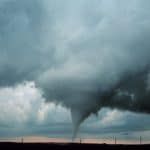The security impact of the uninsured
By Laura H. Kahn | February 1, 2007
In his January 1, 2007 New York Times op-ed piece, “A Healthy New Year,” Paul Krugman wrote that the U.S. health care system is a scandal and disgrace. He noted that in 2005 almost 47 million Americans were uninsured, and more than 8 million of these individuals were children. While Krugman’s article discussed the human tragedy and costs of such a disastrous system, it did not mention two other crucial factors–the national security impact of millions of uninsured people and the decline in the number of primary care physicians and nurses who would provide care during a crisis.
The 9/11 Commission revealed important information regarding U.S. preparedness and response to the attack on the World Trade Center. However, there has not been an independent investigation focusing on the nation’s response to the anthrax letters. It’s important to note that a delay in seeking care and proper treatment proved fatal for five of the eleven inhalational anthrax victims. Seven of the eleven individuals were federal postal workers, all of whom were eligible for health insurance coverage through the Federal Employees Health Benefits Program. Five of these postal workers survived because they sought care and received correct treatment early. But what would have happened if the inhalational anthrax victims had been food handlers, child care workers, or farm workers who lacked health insurance?
In May 2002, the Institute of Medicine (IOM) published a report that estimated that roughly 30 million working age adults were uninsured. The report found that these individuals often delay seeking treatments for illnesses and lack an ongoing relationship with a medical professional. In April 2006, The Robert Wood Johnson Foundation released a state-by-state report (The Coverage Gap: A State-by-State Report on Access to Care) that found that (during the study period from 1998 to 2003) 41 percent of uninsured adults avoided seeking medical care because of cost compared to 9 percent of insured adults.
Another IOM report released in January 2004 estimated that because of poorer health, the uninsured cost the United States somewhere between $65 billion and $130 billion annually more than if they were insured. In the long run, their health care costs are much higher because they delay seeking care until their illness is severe, or in some cases, untreatable.
When time is of the essence, these findings provide a sobering backdrop in our struggle against future bioterrorist attacks and emerging infectious disease outbreaks. For example, delays in seeking or obtaining care could have catastrophic consequences in the event of a communicable disease outbreak such as severe acute respiratory syndrome, pandemic influenza, or smallpox. Public health interventions such as vaccination, quarantine, and isolation rely on the early recognition of an outbreak to successfully contain it. This strategy would be seriously hindered when at least 15 percent of the total U.S. population lacks health insurance, which diminishes access to medical care.
Yet, despite the problems posed by the lack of health insurance for a significant fraction of Americans on overall health care costs, human suffering, and national security, would universal health insurance ever be a viable option in the United States?
According to John K. Iglehart in a January 2007 New England Journal of Medicine editorial, the slim Democratic majority in the new 110th Congress will likely be limited to two health issues–allowing Medicare to negotiate prescription drug prices directly with manufacturers (rather than through private health plans) and funding for federal embryonic stem cell research. President George W. Bush strongly opposes both measures. At the minimum, Congress might decide to expand the State Children’s Health Insurance Program, which began in 1997 but expires at the end of September. But again, that might largely depend on the status of the ballooning deficit. In the near-term, at least, universal health insurance coverage is not an option.
And despite the importance of universal coverage, it should be noted that without health care providers, insurance is useless. The availability of health care professionals–such as primary care physicians and nurses–are critical for epidemic preparedness.
For example, one could argue that France, which has universal coverage and supposedly the best health care system in the world, would fare better than countries that do not offer such coverage. However, even with universal coverage, France’s health care and emergency response system did not help the almost 15,000 (mostly elderly) people who died during the August 2003 heat wave. France’s policy to allow virtually all of its health care professionals to go on vacation at the same time was its Achilles’ heel. Most of the hospital wards throughout France were closed, and even Minister for Health Jean-François Mattéi could not be budged from his vacation when the situation became dire.
In the United States, such a situation could be far worse since there are concerns about the declining availability of health care professionals, such as general internists, who provide primary care. These are the professionals who oversee their patients’ general health care needs and coordinate specialty care. For those without such oversight, problems can easily slip through the cracks and, for the elderly, the number of medications prescribed by various specialists can pile up, leading to potentially dangerous drug interactions.
There have been a number of editorials in the medical literature lamenting the decline of primary care. David B. Reuben wrote the most recent in the January 2007 issue of The American Journal of Medicine. “It is time to face the facts: Primary care in the United States is on death row,” he warned. The number of medical residents pursuing this line of work has fallen dramatically. Reasons for the decline include poor reimbursement for cognitive services (this is a particular concern for those with significant debt from medical education and training), diminished time spent per patient because of cost constraints, and long hours.
Some physicians have taken matters into their own hands and developed “concierge” practices, in which, for a substantial out-of-pocket, up-front fee, well-to-do individuals can get quality primary health care. Of course, this is not a viable option for the millions without any health insurance.
The other key health care providers during an epidemic are nurses. The perennial nursing shortage is getting significantly worse. An article in the September 2002 Lancet states that the nursing shortage is expected to reach a 20 percent deficit by 2020. Reasons for this include an aging nursing population, early retirements, poor working conditions, and alternative career options for women. In addition, recent nursing graduates (both men and women) are leaving the profession in droves. By 2008, the projected number of nursing vacancies is expected to be around 800,000. Band-Aid solutions such as luring nurses from other countries, particularly developing countries that desperately need to keep their nurses, should not be an option.
So the United States has several major strikes against it in terms of rapidly identifying and responding to a future epidemic. As with the well-known sorry state of the levees in New Orleans before Hurricane Katrina, we can’t say that we were unaware of the problems. The challenge is to find a way to fix them before it is too late.
Together, we make the world safer.
The Bulletin elevates expert voices above the noise. But as an independent nonprofit organization, our operations depend on the support of readers like you. Help us continue to deliver quality journalism that holds leaders accountable. Your support of our work at any level is important. In return, we promise our coverage will be understandable, influential, vigilant, solution-oriented, and fair-minded. Together we can make a difference.
Topics: Columnists















